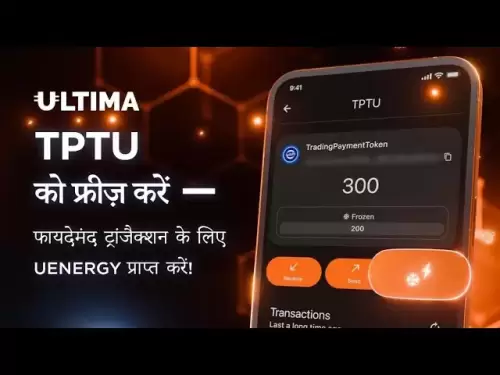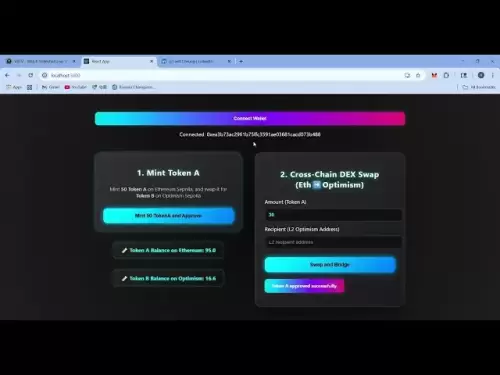-
 Bitcoin
Bitcoin $109,459.7682
2.44% -
 Ethereum
Ethereum $2,598.6052
6.29% -
 Tether USDt
Tether USDt $1.0003
0.00% -
 XRP
XRP $2.2734
3.95% -
 BNB
BNB $661.4886
1.58% -
 Solana
Solana $155.4825
4.35% -
 USDC
USDC $0.9999
-0.02% -
 TRON
TRON $0.2838
1.04% -
 Dogecoin
Dogecoin $0.1740
8.25% -
 Cardano
Cardano $0.6047
9.04% -
 Hyperliquid
Hyperliquid $40.2302
6.50% -
 Sui
Sui $2.9863
10.05% -
 Bitcoin Cash
Bitcoin Cash $509.5786
0.60% -
 Chainlink
Chainlink $13.8156
6.03% -
 UNUS SED LEO
UNUS SED LEO $9.0142
0.69% -
 Avalanche
Avalanche $19.0337
8.68% -
 Stellar
Stellar $0.2438
5.17% -
 Toncoin
Toncoin $2.9012
3.59% -
 Shiba Inu
Shiba Inu $0.0...01210
6.20% -
 Litecoin
Litecoin $90.0882
7.05% -
 Hedera
Hedera $0.1597
8.53% -
 Monero
Monero $326.3340
2.88% -
 Polkadot
Polkadot $3.6365
9.32% -
 Bitget Token
Bitget Token $4.6162
2.72% -
 Dai
Dai $1.0001
0.00% -
 Ethena USDe
Ethena USDe $1.0002
-0.01% -
 Uniswap
Uniswap $7.6403
10.47% -
 Pepe
Pepe $0.0...01060
12.03% -
 Aave
Aave $281.3664
7.56% -
 Pi
Pi $0.4992
1.76%
How to export the private key of Phantom Wallet?
Exporting your Phantom Wallet private key requires a secure environment and careful handling to protect your cryptocurrencies from unauthorized access.
Apr 07, 2025 at 05:42 pm
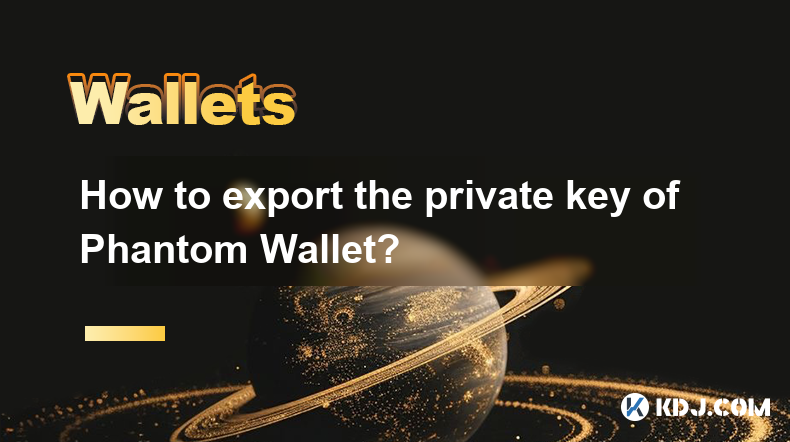
How to Export the Private Key of Phantom Wallet?
Exporting the private key from your Phantom Wallet is a crucial task that requires careful attention to ensure the security of your cryptocurrencies. Phantom Wallet, a popular non-custodial wallet for Solana and other blockchains, allows users to manage their assets directly. The private key is essential for accessing and managing your funds, and it's vital to handle it securely. In this guide, we'll walk you through the steps to export your private key safely. Remember, always ensure you're in a secure environment when dealing with private keys.
Understanding the Importance of Private Keys
Before diving into the steps, it's essential to understand the significance of private keys. A private key is a secret number that allows you to spend the cryptocurrencies associated with your wallet. If someone else gains access to your private key, they can control your funds. Therefore, it's crucial to keep your private key confidential and secure. Never share it with anyone or store it in an insecure location.
Preparing for Export
To export your private key from Phantom Wallet, you need to ensure you're using the latest version of the wallet. Here are some preliminary steps to take:
- Update Phantom Wallet: Make sure your Phantom Wallet is up-to-date to avoid any compatibility issues.
- Secure Environment: Ensure you're in a private, secure location where no one can see your screen or record your actions.
- Backup: It's a good practice to have a backup of your wallet's recovery phrase before proceeding with the export.
Accessing the Settings
To begin the process of exporting your private key, you need to access the settings within Phantom Wallet. Here's how you can do it:
- Open the Phantom Wallet application on your device.
- Click on the settings icon, usually located in the top right corner of the interface.
- Scroll down to find the 'Export Private Key' option. This might be under an 'Advanced' or 'Security' section, depending on the version of the wallet.
Exporting the Private Key
Once you've accessed the settings, you can proceed with exporting the private key. Follow these steps carefully:
- Click on the 'Export Private Key' option. You may be prompted to enter your wallet password or recovery phrase to proceed.
- After entering the required information, the wallet will display your private key. It's usually a long string of characters and numbers.
- Copy the private key to a secure location. You can use a text editor or a dedicated secure note-taking app. Avoid using unsecured methods like email or messaging apps.
Securing Your Private Key
After exporting your private key, it's crucial to secure it properly. Here are some tips to ensure its safety:
- Offline Storage: Store your private key in an offline environment, such as a hardware wallet or a paper wallet. This reduces the risk of it being compromised by online threats.
- Encryption: If you must store your private key digitally, encrypt it with strong encryption software. Use a complex password and keep it separate from the encrypted file.
- Multiple Copies: Keep multiple copies of your private key in different secure locations. This can help in case one copy is lost or damaged.
Verifying the Private Key
After securing your private key, it's a good idea to verify that it works correctly. Here's how you can do it:
- Use a different wallet or a blockchain explorer to import the private key and check if it accesses the correct funds.
- Make a small test transaction to ensure the private key is functioning as expected. Remember to keep this transaction small to minimize risks.
Common Mistakes to Avoid
When exporting and handling your private key, there are several common mistakes to avoid:
- Sharing the Private Key: Never share your private key with anyone. Doing so can lead to the loss of your funds.
- Storing in Insecure Locations: Avoid storing your private key in easily accessible locations like cloud storage or unsecured devices.
- Not Verifying: Failing to verify the private key can lead to issues if the key is incorrect or compromised.
Additional Security Measures
To further enhance the security of your Phantom Wallet and private key, consider these additional measures:
- Enable Two-Factor Authentication (2FA): Adding an extra layer of security can help protect your wallet from unauthorized access.
- Regularly Update Your Software: Keep your wallet and any related software up-to-date to protect against known vulnerabilities.
- Monitor Your Wallet: Regularly check your wallet for any unauthorized transactions or suspicious activities.
Using the Private Key with Other Wallets
If you plan to use your private key with other wallets or services, here are some tips to consider:
- Compatibility: Ensure the wallet or service you're using supports the blockchain associated with your private key. Phantom Wallet primarily supports Solana, so check for Solana compatibility.
- Import Process: Follow the specific import process for the new wallet or service. This usually involves entering the private key and confirming the import.
- Security: Always use secure methods to transfer your private key. Avoid using public networks or unsecured devices.
Handling Lost or Compromised Private Keys
In the unfortunate event that your private key is lost or compromised, here's what you can do:
- Lost Private Key: If you lose your private key but have your recovery phrase, you can restore your wallet using the recovery phrase. If you don't have the recovery phrase, your funds may be inaccessible.
- Compromised Private Key: If you suspect your private key has been compromised, immediately transfer your funds to a new wallet with a new private key. Monitor your old wallet for any unauthorized transactions.
Best Practices for Private Key Management
To manage your private key effectively, follow these best practices:
- Regular Backups: Regularly backup your wallet and private key to secure locations.
- Secure Communication: If you need to communicate about your private key, use secure channels like encrypted messaging apps.
- Education: Stay informed about the latest security practices and threats in the cryptocurrency space.
Common Questions About Exporting Phantom Wallet Private Key
Q: Is it safe to export my private key from Phantom Wallet?
A: Exporting your private key can be safe if done in a secure environment and with proper security measures. Always ensure you're in a private location, and store the key securely afterward.
Q: Can I import my Phantom Wallet private key into another wallet?
A: Yes, you can import your Phantom Wallet private key into another wallet that supports the same blockchain. Ensure the new wallet is compatible with Solana or any other blockchain you're using.
Q: What should I do if I lose my private key?
A: If you lose your private key but have your recovery phrase, you can restore your wallet using the recovery phrase. Without the recovery phrase, your funds may be inaccessible.
Q: How can I protect my private key after exporting it?
A: Store your private key in an offline environment, encrypt it if stored digitally, and keep multiple copies in different secure locations. Never share your private key with anyone.
Q: Can I use the same private key on multiple devices?
A: Yes, you can use the same private key on multiple devices, but ensure each device is secure. It's generally safer to use different keys for different devices to minimize risks.
Q: What should I do if I suspect my private key has been compromised?
A: If you suspect your private key has been compromised, immediately transfer your funds to a new wallet with a new private key. Monitor your old wallet for any unauthorized transactions.
Q: How often should I export my private key?
A: You should only export your private key when necessary, such as when moving to a new wallet or for backup purposes. Frequent exports increase the risk of key exposure.
Q: Can I recover my private key if I forget it?
A: If you forget your private key, you can use your recovery phrase to restore your wallet. Without the recovery phrase or private key, your funds may be inaccessible.
Q: What is the difference between a private key and a recovery phrase?
A: A private key is a unique number that allows you to spend the cryptocurrencies in your wallet. A recovery phrase is a set of words that can be used to restore your wallet and access your private key. Both are crucial for wallet security.
Q: Are there any tools to help manage my private key securely?
A: Yes, there are tools like hardware wallets and secure note-taking apps that can help manage your private key securely. Hardware wallets store your key offline, reducing the risk of online threats.
Disclaimer:info@kdj.com
The information provided is not trading advice. kdj.com does not assume any responsibility for any investments made based on the information provided in this article. Cryptocurrencies are highly volatile and it is highly recommended that you invest with caution after thorough research!
If you believe that the content used on this website infringes your copyright, please contact us immediately (info@kdj.com) and we will delete it promptly.
- Coinbase's Crypto Conquest: The Liquifi Acquisition and the Token Revolution
- 2025-07-03 16:30:12
- Neo Pepe Coin: Can This Meme Coin Make Waves in the 2025 Crypto Market?
- 2025-07-03 16:50:12
- Toncoin, Dogecoin, and Shiba Inu: A Wild Ride in the Crypto Zoo
- 2025-07-03 16:30:12
- AllScale: Stablecoin Solutions Empowering Small Businesses – A New York Perspective
- 2025-07-03 16:35:12
- Neo Pepe Coin Presale: Is This Meme Coin a Serious Crypto Investment?
- 2025-07-03 17:10:11
- Memecoins to Buy in July 2025: Riding the Hype or Investing Wisely?
- 2025-07-03 17:10:11
Related knowledge
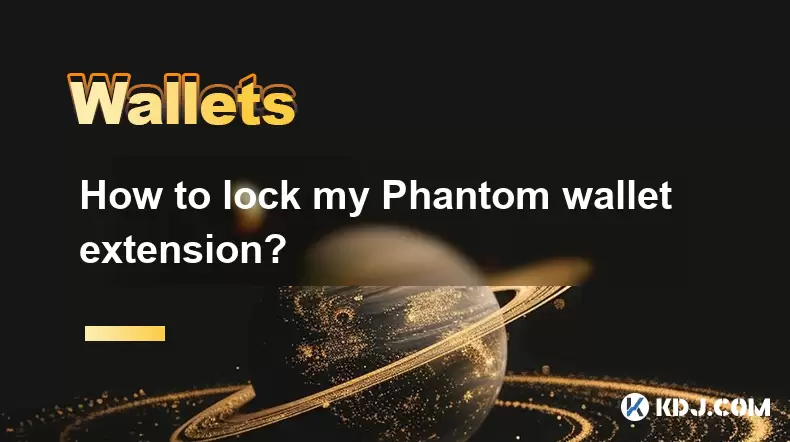
How to lock my Phantom wallet extension?
Jul 03,2025 at 11:14am
What Is the Phantom Wallet and Why Lock It?The Phantom wallet is a popular non-custodial cryptocurrency wallet designed for interacting with the Solana blockchain. Supporting both browser extensions and mobile apps, Phantom allows users to store, send, receive, and stake SOL tokens, as well as interact with decentralized applications (dApps). Securing y...

Does Phantom wallet offer two-factor authentication (2FA)?
Jul 03,2025 at 09:00am
Understanding Phantom Wallet and Its Security FeaturesPhantom wallet is a widely used non-custodial cryptocurrency wallet that supports the Solana blockchain. It allows users to store, send, receive, and interact with decentralized applications (dApps) seamlessly. As security is a top priority for any crypto wallet user, security features like two-facto...
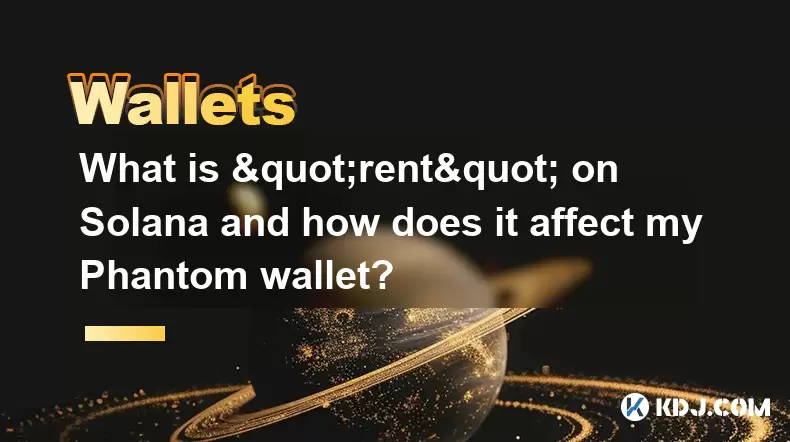
What is "rent" on Solana and how does it affect my Phantom wallet?
Jul 02,2025 at 08:35pm
Understanding 'Rent' on SolanaIn the context of Solana, the term 'rent' refers to a storage fee that users pay for maintaining data on the blockchain. Unlike Ethereum, where storage costs are paid once via gas fees during contract deployment, Solana implements a recurring cost model to ensure efficient usage of network resources. This means that any acc...
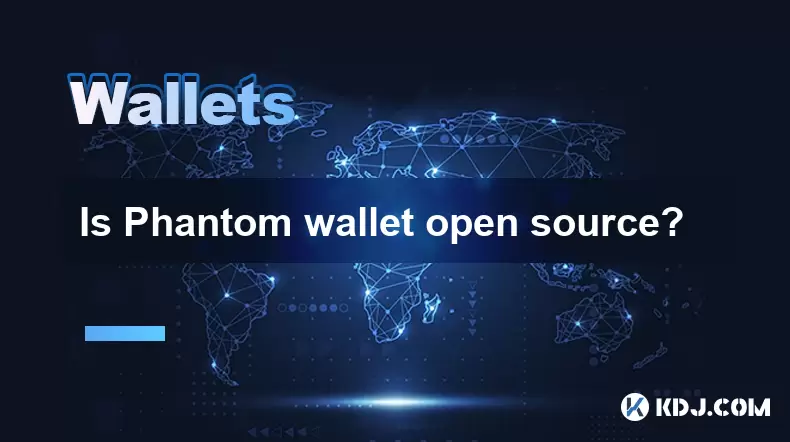
Is Phantom wallet open source?
Jul 03,2025 at 12:29am
What is Phantom Wallet?Phantom wallet is a non-custodial cryptocurrency wallet primarily designed for the Solana blockchain. It allows users to store, send, receive, and interact with decentralized applications (dApps) on the Solana network. The wallet is available as a browser extension and mobile application, offering a seamless experience for both be...
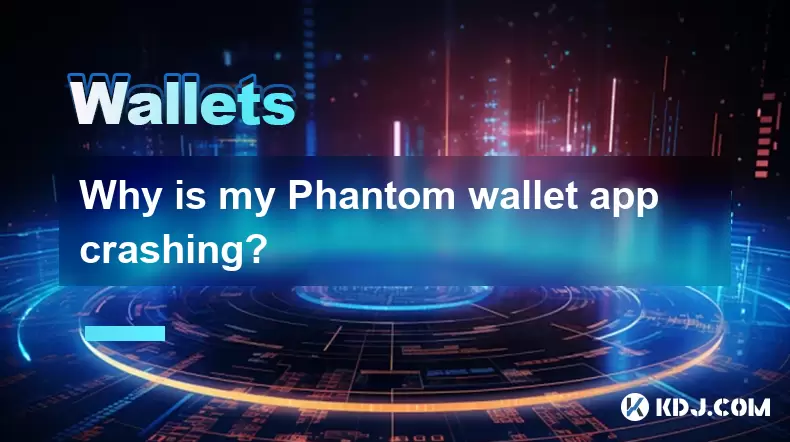
Why is my Phantom wallet app crashing?
Jul 02,2025 at 07:35pm
Understanding Phantom Wallet App CrashesIf you're experiencing issues with the Phantom wallet app crashing, you're not alone. Many users have reported similar problems, especially during high network activity or after recent updates. Phantom is a popular Solana-based wallet that allows users to store, send, and receive SOL tokens as well as interact wit...
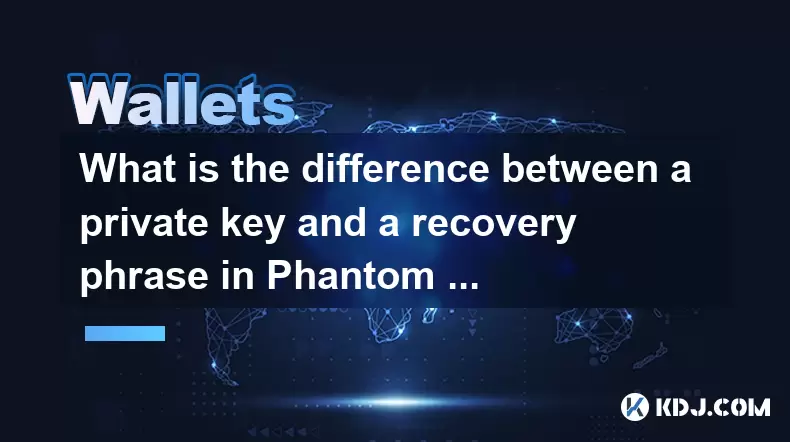
What is the difference between a private key and a recovery phrase in Phantom wallet?
Jul 02,2025 at 09:57am
Understanding the Basics of Phantom WalletPhantom wallet is a non-custodial digital wallet primarily used for interacting with the Solana blockchain. It allows users to store, send, and receive SOL tokens and other digital assets like NFTs. Non-custodial means that the user retains full control over their private keys and recovery phrases. Understanding...

How to lock my Phantom wallet extension?
Jul 03,2025 at 11:14am
What Is the Phantom Wallet and Why Lock It?The Phantom wallet is a popular non-custodial cryptocurrency wallet designed for interacting with the Solana blockchain. Supporting both browser extensions and mobile apps, Phantom allows users to store, send, receive, and stake SOL tokens, as well as interact with decentralized applications (dApps). Securing y...

Does Phantom wallet offer two-factor authentication (2FA)?
Jul 03,2025 at 09:00am
Understanding Phantom Wallet and Its Security FeaturesPhantom wallet is a widely used non-custodial cryptocurrency wallet that supports the Solana blockchain. It allows users to store, send, receive, and interact with decentralized applications (dApps) seamlessly. As security is a top priority for any crypto wallet user, security features like two-facto...

What is "rent" on Solana and how does it affect my Phantom wallet?
Jul 02,2025 at 08:35pm
Understanding 'Rent' on SolanaIn the context of Solana, the term 'rent' refers to a storage fee that users pay for maintaining data on the blockchain. Unlike Ethereum, where storage costs are paid once via gas fees during contract deployment, Solana implements a recurring cost model to ensure efficient usage of network resources. This means that any acc...

Is Phantom wallet open source?
Jul 03,2025 at 12:29am
What is Phantom Wallet?Phantom wallet is a non-custodial cryptocurrency wallet primarily designed for the Solana blockchain. It allows users to store, send, receive, and interact with decentralized applications (dApps) on the Solana network. The wallet is available as a browser extension and mobile application, offering a seamless experience for both be...

Why is my Phantom wallet app crashing?
Jul 02,2025 at 07:35pm
Understanding Phantom Wallet App CrashesIf you're experiencing issues with the Phantom wallet app crashing, you're not alone. Many users have reported similar problems, especially during high network activity or after recent updates. Phantom is a popular Solana-based wallet that allows users to store, send, and receive SOL tokens as well as interact wit...

What is the difference between a private key and a recovery phrase in Phantom wallet?
Jul 02,2025 at 09:57am
Understanding the Basics of Phantom WalletPhantom wallet is a non-custodial digital wallet primarily used for interacting with the Solana blockchain. It allows users to store, send, and receive SOL tokens and other digital assets like NFTs. Non-custodial means that the user retains full control over their private keys and recovery phrases. Understanding...
See all articles





















